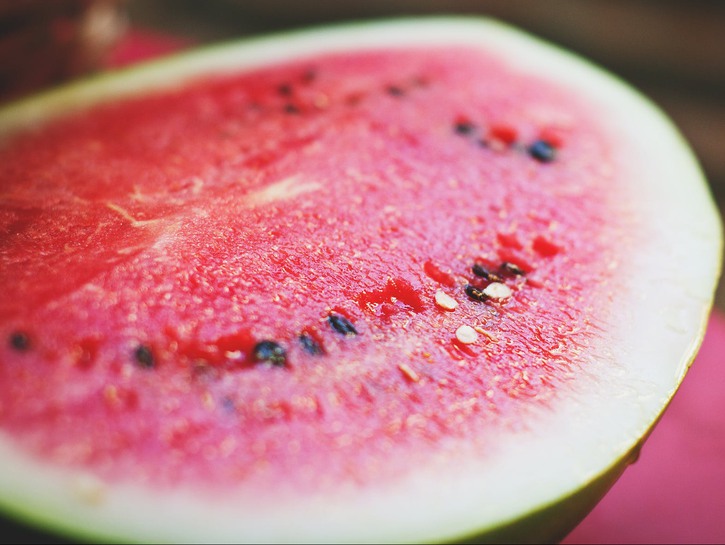Watermelon has many different uses, such as making a yummy watermelon jerky, cultivating a refreshing salad, or even creating a zesty margarita, but you might not know about one vital part of this fruit — the seeds. Watermelon seeds are full of vitamins that help to cultivate a healthier way of eating, and are packed with vital nutrients that the body needs to keep functioning. Here are some tips on how to incorporate watermelon seeds into your diet and why they are the perfect food to embrace, not throw away.
Health Benefits Of Watermelon Seeds

All watermelon seeds begin as those tiny seeds you see upon slicing open a fresh, ripe watermelon, and each watermelon contains about 200 to 800 seeds. Despite some health superstitions, such as one that claims that eating watermelon seeds will make you sprout a watermelon in your belly, there are a variety of health benefits that can help you maintain your overall wellbeing. Watermelon seeds provide a substantial amount of nutritional protein that make them useful as ingredients in various food products, such as dough. However, watermelon seeds should be hulled or seeded before ingesting them.
Once seeds are sprouted, then they contain the most benefits. Watermelon already contains a high amount of water, at 91 percent, while watermelon seeds contain at least 5 grams of water per cup, according to the USDA. This makes watermelon seeds a great way to obtain your recommended intake of water, as well as vitamin B, magnesium, iron, and calcium. Watermelon seeds are also pretty high in fat, but healthy monounsaturated and polyunsaturated fats, which help decrease the amount of harmful LDL that can lead to clogged arteries and heart disease. Other health benefits of watermelon include:
- Lower blood pressure
- High amount of lycopene, which promotes prostate, heart, and kidney function
- Low in calories
- Rich in fiber
- Contains Omega-3 and Omega-6 fatty acids
Ways To Prepare Watermelon Seeds

When it comes to watermelon seeds, there are various ways to incorporate watermelon seeds into your diet — in smoothies, as part of a healthy trail mix, or even just eaten on their own as a healthy snack. Although you can chew seeds that contain their black shell, the best means to actually consume them is by taking the white interior out and eating that, rather than the tough, black exterior. Like pumpkin seeds, watermelon seeds may also be roasted, which lends a light, nutty taste, especially when sprinkled with a dab of salt and other seasonings and spices.
Roasting watermelons seeds is super easy — simply slice a pat of butter or utilize olive oil and saute for about five minutes. Then, just sprinkle with some salt and you’re good to go. You may also use watermelon seeds to top your favorite salads, as a nutritional boost for yogurt or even mixed in with your oatmeal or cereal. Whichever way you choose to prepare them, now you know just how healthy and useful watermelon seeds are and the value they hold. Here is a simple and easy watermelon seed recipe that you can use, especially during the summer months, when watermelon ripeness is at it’s peak and you have all those leftover seeds.
Oven-Roasted Watermelon Seeds

Watermelon seeds are often thrown aside and their true value overlooked. Instead of discarding them, try saving them to create many delicious toppings for a variety of dishes, as a snack, or as a roasted alternative to otherwise unhealthy salty snacks.
What You’ll Need:
- Watermelon seeds ( at least 1 or 2 cups)
- Olive oil
- 1 tablespoon of butter
- Ground black pepper, salt, and other seasonings and spices
Instructions:
- Rinse watermelon seeds and soak for two hours in salted water.
- Remove the seeds from the water, then drain and pat them dry. Remove any leftover watermelon juice or goo as much as possible.
- Preheat oven to 325 degrees.
- Place seeds in a large oven-proof cookie sheet, glass baking pan or any other metal baking dish.
- Drizzle and coat with olive oil. Then sprinkle with seasonings, spices, or herbs for taste.
- Place the seeds into the oven and bake for about 40 minutes, then turn the temperature up to 350 degrees and bake for about 15 minutes more, or until the seeds are crisp, golden brown.
- Remove the seeds from the oven, then allow to cool. Then transfer the seeds to a paper towel or cloth towel to absorb the excessive oil. When the seeds are completely cool, store them in an air-tight container or air-tight bag. Enjoy!
Watermelon seeds not only add variety to your food repertoire, but they also pack a big punch when it comes to getting your recommended daily vitamins and minerals.
